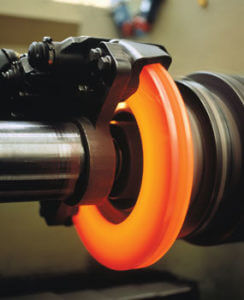- Joined
- Dec 28, 2014
- Messages
- 2,847
The problem is everything in those articles lead to a warped rotor: the high spots on the rotor, the pad material...all lead to heat, which leads to the metallurgy changing in the rotors itself, which generates excessive heat and a warped rotor. One leads to the other. And then you put it on the lathe and it’s clearly warped. If you run a dial indicator on it, it’s warped.Guess it depends what you read including on here. Many say it is due to uneven amount of friction material.
personally, I’ve studied it enough to think rotors do get warped. However, that doesn’t occur as often as people think.
anytime people have a shudder “oh it’s warped.”
Nope. Not always.

Solved: The Mystery of Warped Brake Rotors
www.mechanic.com.au

Warped brake rotors: There's no such thing
Debunking the myth of warped brake rotors. Learn why brake rotors don't actually warp and what really causes brake pedal pulsation.ricksfreeautorepairadvice.com
Those articles literally list the causes of a warped rotor, and all of those things happen. Daily.
So, there’s two things that have always caused a pulsation, excessive lateral run out (warped rotor) or parallelism (high spots on a rotor). The parallelism is actually worse because it actually changes the metallurgy of the metal (and technically you’re not supposed to even cut those rotors) because the metal has changed, and you can’t remove those new characteristics of THAT metal. And it will just pulsate again.
So, if parallelism happens more often than excessive lateral run out...we shouldn’t be cutting rotors at all. I guess.
